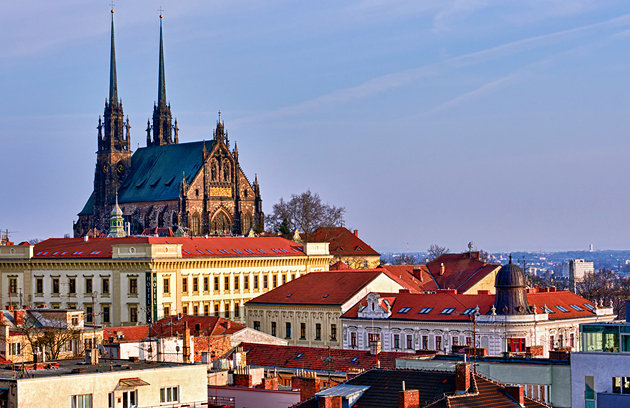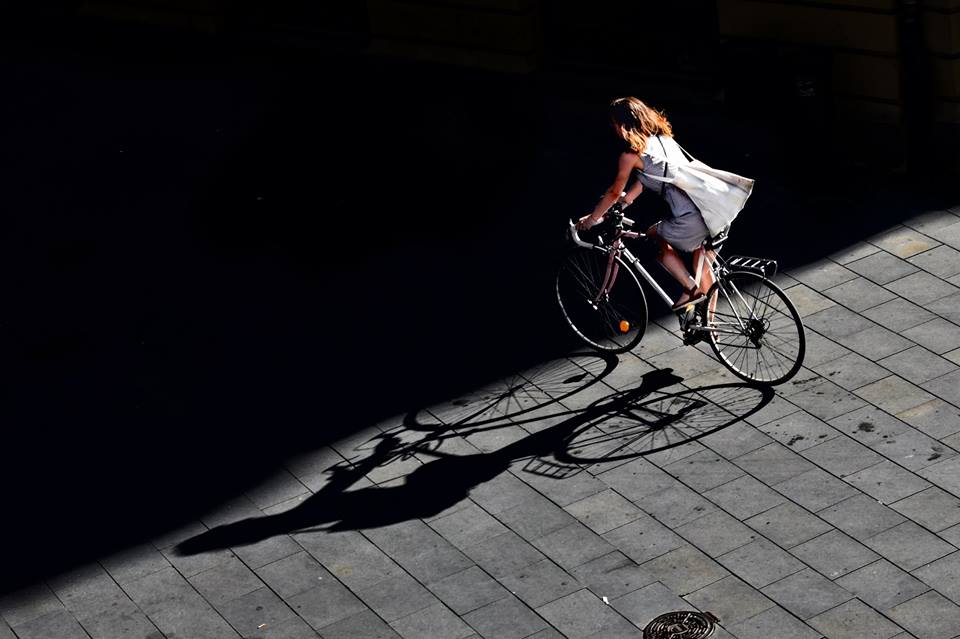Reading through Brno

When I was young, my mother had the annoying habit of pointing out every Czech name in film credits. It was her connection to her homeland. It drove me crazy.
I didn’t learn any Czech, which would come in handy now, but I learned that Svoboda and any woman with a last name that ended in –ová were Czech names — which provided exactly zero help while being audited by the tax office twice.
Of course, now I find myself doing a similarly annoying thing: I constantly point out my connection to the places that movies scenes were filmed.
“Ten Things I Hate About You”, a contemporary high school version Taming of the Shrew that is actually a decent teenager movie with Heath Ledger and Julia Stiles, is set at Stadium High School, a half-kilometer from where I lived in Tacoma, Washington. One hundred meters in the other direction, the horror movie “The Hand that Rocks the Cradle” used the house and, importantly, the greenhouse that was easily visible from the street. In New York, I lived 100 meters from the Port Authority Bus Terminal and the location for the ending of a car chase in “The Borne Ultimatum”. When I first moved to Prague, I lived 50 meters from where a scene from “The Borne Identity” was filmed.
Brno hasn’t been used for any big Hollywood movies as far as I know. The television show “Kancl”, the Czech version of “The Office”, was fun to watch because it was filmed in what is now My Food in Spielberk Office Centre. And “CZizincII”, in which I played a small role, is about local expats.
But, really, Brno is not overly represented in film. Books, however, are another story.

* * *
Books tap into the imagination in amazing ways and they can take you around the world and back through history many times over in ways more powerful than any fleeting background image in a movie.
Reading is actually one of my New Year’s resolutions: one book a week. So far I have been to contemporary England for the viewpoint of an autistic boy in Mark Haddon’s “The Curious Incident of the Dog in the Night-Time” and the fascinatingly random settings of Haddon’s short stories in “The Pier Falls”; I’ve been to old-school Czechoslovakia for Richard Askwith’s “Today We Die a Little: The Rise and Fall of Emil Zátopek, Olympic Legend”; I’ve been to England again for Bill Bryson’s “Shakespeare”; I’ve been to the Pacific for Laura Hillenbrand’s “Unbroken: A World War II Story of Survival, Resilience, and Redemption” for the story of Louis Zamperini; and now I am in the middle of both Game of Thrones world because I finally decided to read George A.A. Martin’s series and in 1960s Mississippi for Kathryn Stockett’s “The Help”.
But, like with movies, it is often more fun to read about events that happen where you live. Another book that I have just reread is “Mendel’s Dwarf”. The author, Simon Mawer, is perhaps best known for his novel about Villa Tugendhat, “The Glass Room”, which was shortlisted for the Mann Booker Prize, is performed locally as a play, and is definitely an excellent read. “Mendel’s Dwarf” is the book that introduced me to Mawer’s work and, to some extent, introduced me to Brno itself.
 “Mendel’s Dwarf” — which I also highly recommend — was passed around one of my writing groups while I still lived in New York City more than a decade ago. When it finally got to me, it resulted in one of those random pleasant shocks: I was standing on a packed downtown A-Train, cracked open the book, and flushed when I realized that the first scene took place in a Czech city. At the time I had only a passing knowledge that Brno existed somewhere between Prague and where my parents were from in Moravia. In any case, the Czech Republic was the last place I expected as the subway rumbled under Madison Square Garden en route to another winter day of horse racing at Aqueduct Racetrack.
“Mendel’s Dwarf” — which I also highly recommend — was passed around one of my writing groups while I still lived in New York City more than a decade ago. When it finally got to me, it resulted in one of those random pleasant shocks: I was standing on a packed downtown A-Train, cracked open the book, and flushed when I realized that the first scene took place in a Czech city. At the time I had only a passing knowledge that Brno existed somewhere between Prague and where my parents were from in Moravia. In any case, the Czech Republic was the last place I expected as the subway rumbled under Madison Square Garden en route to another winter day of horse racing at Aqueduct Racetrack.
It seemed so strange — and exhilarating — to see the names of Czech streets and squares in an English-language book. At that moment, I understood my mother’s excitement about pointing out Czech names.
Connected to my read-more-books resolution, is also to read a book in Czech. As noted above, I can identify Czech names, but I read Czech at a juvenile level. To make the struggle worthwhile, I have decided upon a local book written by a local author: “Vyhnání Gerty Schnirch” (“The Expulsion of Gerta Schnirch”) by Kateřina Tučková.
This area has made appearances in other war-time books, like “War and Peace” by Leo Tosltoy, which hinges upon the Battle of Austerlitz. Tučková’s critically acclaimed book about the Brno death march after World War II (you knew about it, right?) is also a powerful look at the travails of wartime — or so I am told: I’ve only just started.
* * *
I hope to have occasion to read many works of writing about Brno very soon. Stay tuned for an announcement about a new writing contest that will begin on February 1. One hint: Brno.

